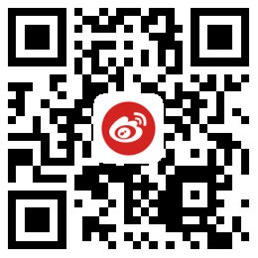热线电话:
0635-668709510广岛核爆经典照片并非真的蘑菇云‘通发娱乐818’
本文摘要:Later this week, President Obama plans to visit a memorial in Hiroshima, Japan, that displays a large photograph of the city’s destruction seven decades ago. The striking image is typically identified as a mushroom cloud. But nuclear experts say it actually shows billowing smoke from a raging firestorm.美国总统奥巴马计划本周晚些时候采访日本广岛的一个纪念馆,那里有一张显眼的大照片,表明了该市七十年前遭核空袭的景象,人们一般来说指出那是蘑菇云。Later this week, President Obama plans to visit a memorial in Hiroshima, Japan, that displays a large photograph of the city’s destruction seven decades ago. The striking image is typically identified as a mushroom cloud. But nuclear experts say it actually shows billowing smoke from a raging firestorm.美国总统奥巴马计划本周晚些时候采访日本广岛的一个纪念馆,那里有一张显眼的大照片,表明了该市七十年前遭核空袭的景象,人们一般来说指出那是蘑菇云。但核专家说道,图中表明的只不过是熊熊火焰产生的滚滚浓烟。“This is not a mushroom cloud,” said Richard L. Garwin, a noted bomb designer and longtime adviser to Washington on nuclear arms.“那不是蘑菇云,”知名的核弹设计师、长年在华盛兼任顿核军备顾问的理查德·L·加文(Richard L. Garwin)说道。
Kevin Roark, a spokesman at the Los Alamos weapons laboratory in New Mexico, which made the Hiroshima bomb, known as Little Boy, said the image showed “a smoke plume from the fires that followed.”新墨西哥州洛斯阿拉莫斯(Los Alamos)武器实验室的发言人凯文·洛克(Kevin Roark)说道,图片表明的是“发生爆炸后烈火升腾的浓烟”。空袭广岛的原子弹“小男孩”(Little Boy)就是该实验室生产的。Military experts say the cloud and its dark shadow can be seen as a kind of sundial that suggests when an American plane took the photograph. John Coster-Mullen, an expert on the Hiroshima bomb, put the time as just before noon — more than three hours after the strike on the morning of Aug. 6, 1945.军事专家说道,烟云及其阴影可以看做是一种日晷,表明了美国飞机摄制这张照片的时间。
研究广岛原子弹的专家约翰·科斯特-马伦(John Coster-Mullen)说道,摄制时间相似正午——1945年8月6日早上攻击开始的三个多小时后。The towering plume, he said in an email, “is most definitely not the original mushroom cloud, which had long since dissipated.”他在一封电邮说道,“最初的蘑菇云早就减弱,决不是这一道”升腾的浓烟。
Mr. Roark said the cloud, if it were nuclear in nature, would be larger than the one resulting from the most powerful bomb the United States ever detonated, which was a thousand times stronger than Little Boy.洛克说道,美国至今爆炸过的仅次于核弹威力比“小男孩”强劲一千倍,但蘑菇云都不如这团烟云大。This is the most famous image of the Hiroshima mushroom cloud, which was taken minutes after the Enola Gay, a B-29 bomber, dropped the bomb that changed history. The photographer was the plane’s tail gunner, Bob Caron, a native of Brooklyn. The photograph he took shows the area near the ground beginning to boil with dark smoke. 这是广岛蘑菇云最出名的照片,是在B-29轰炸机艾诺拉·盖伊号(Enola Gay)引爆了转变了历史的核弹数分钟之后摄制的。拍摄者是飞机的尾炮手、土生土长的布鲁克林人鲍勃·卡隆(Bob Caron)。
从他摄制的这张照片中可以看见,地面附近的区域照亮了大量黑烟。“I saw fires springing up,” Mr. Caron once recalled. “Pretty soon, it was hard to see anything because of the smoke.” “我看见了火焰陷起,”卡隆有一次回忆说。
“迅速,由于烟雾过于美浓,什么东西都看不清了。”Hiroshima was a tinderbox. Survivors said paper, wood, and blackout curtains burst into flames. The firestorm raged over miles.广岛是一个火药桶。
幸存者说道,纸、木材,遮阳窗帘起火燃烧。火灾连绵数英里。
After the war, the United States conducted more than 200 tests of nuclear devices in the atmosphere and carefully photographed their mushroom clouds. One of the most powerful was code-named Ivy Mike, pictured here.战争完结后,美国在大气层展开了200多次核弹测试,并且细心地拍到它们的蘑菇云。其中威力最强劲的核弹之一代号为“常春藤麦克”(Ivy Mike),这里有它的图。“The Effects of Nuclear Weapons,” a federal guide, said the mushroom clouds typically reached their maximum heights in about 10 minutes and could linger “for about an hour or more before being dispersed by the winds.”联邦指南手册《核武器的影响》(The Effects of Nuclear Weapons)说道,蘑菇云一般来说在10分钟左右升到仅次于高度,“在被驱赶风前,可维持大约一个小时或更加长时间。
”The first thing a visitor sees at the Hiroshima Peace Memorial Museum is a large blowup of the towering cloud. It stretches floor to ceiling. Period lettering in its lower-right-hand corner identifies the scene as “Hiroshima (atomic) strike.” Otherwise, the image speaks for itself, a grim prelude to the museum’s tour of destruction. 前往广岛和平纪念资料馆(Hiroshima Peace Memorial Museum),你第一眼看见的就是高耸的烟云图像,从地面直到天花板。右下角写出着“广岛核攻击”。就算没字,这幅图像也很隐晦,它是一个不利的前奏,为博物馆展现出的吞噬之旅拉开序幕。
The museum distributes the image to news agencies that give the photograph’s original source as the United States Army, which in 1945 ran the Air Force. Recently, The Associated Press called the image a mushroom cloud, as did a caption for the A.P. photograph accompanying an article in The New York Times about Mr. Obama’s impending visit. 该博物馆将这幅图像分发给各新闻机构,称之为照片来自美国陆军,1945年时美国空军也由陆军负责管理。近日,美联社(Associated Press)称之为图中是蘑菇云,在《纽约时报》一篇关于奥巴马将要采访广岛的文章中,为美联社这张照片获取的图释也说道它是蘑菇云。So too, “The Making of the Atomic Bomb,” a 1986 book that received a Pulitzer, described the image as “the mushroom cloud over Hiroshima.”1986年的普利策得奖图书《原子弹的修建》(The Making of the Atomic Bomb)也把这幅图称作“广岛海面的蘑菇云”。
Mr. Coster-Mullen, author of “Atom Bombs” and, in his youth, a photographer for the Daily News in Beloit, Wis., called the recurring misidentification a case of simple confusion. 《原子弹》(Atom Bombs)的作者科斯特-马伦年轻时曾是威斯康星州贝洛伊特《每日新闻》(Daily News)的摄影师,他说道人们再三误认为蘑菇云,只不过就是混淆了。“It’s dramatic,” he said of the photograph. “People compare it to the wimpy little mushroom cloud and say: ‘Let’s show this one. It’s really big.’”“这张的效果很震惊,”他说道这张照片。
“人们把它和小小的蘑菇云较为了一下,说道:‘我们就敲这张图吧,这张知道相当大。
本文来源:通发娱乐818-www.wzjjkt.com
扫一扫关注大业微信公众帐号
